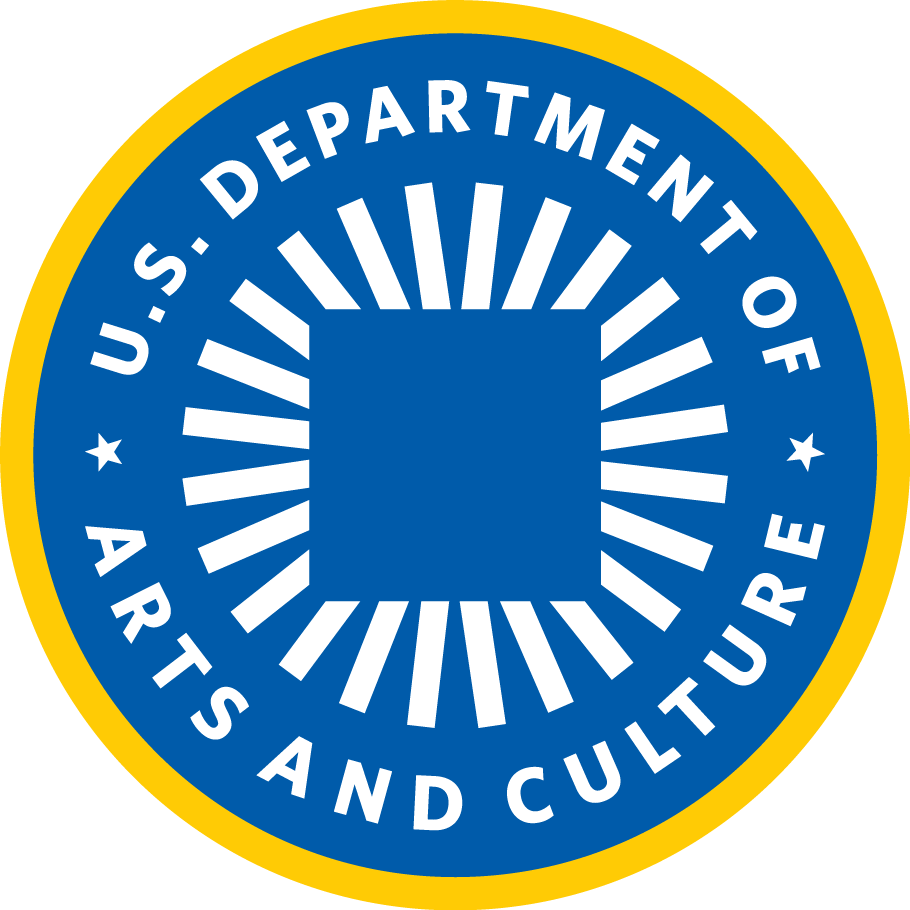The USDAC has just released our free guide for artists, creative organizers, healthcare providers, educators, funders, policy-makers, and communities responding to threats to well-being. Download it for free now. You will read that:
We envision a time when cultural interventions to improve personal and social health are commonplace and well-funded. Imagine not just a beautiful appearance for every hospital and clinic; not just musicians and storytellers on every ward to help people craft the narratives and move to the rhythms of their own healing. Go further and imagine never again having to argue for the necessity of beauty, connection, and purpose to well-being. Imagine the scales falling from policymakers’ eyes, allowing them to finally see that social justice heals. Imagine them investing real power and resources in that truth.
Art & Well-Being was created to answer a question absolutely key to such a culture shift: What can art do to nurture a culture of health? The guide’s answers cover three different approaches:
Prevention: Art can shine a light on essential truths about our individual and collective well-being.
Advocacy: Art can advocate for the rights of those facing health challenges.
Treatment: Art can engage, serve, partner, and support those living with health challenges.
Art & Well-Being includes a framework for understanding a culture of health, one that responds equally to all individual and community needs. It starts with the social determinants of health—such as race, class, and gender—demonstrating how social justice is the single greatest factor in ensuring well-being. Consider these observations by Vicenç Navarro López, a professor who teaches both in the U.S. and Spain:
To quote one statistic directly from the [WHO Commission on Social Determinants of Health 2009] report: “A girl born in Sweden will live 43 years longer than a girl born in Sierra Leone.” The mortality differentials among countries are enormous. But such inequalities also appear within each country, including the so-called rich or developed countries. Again, quoting from the report: “In Glasgow, an unskilled, working-class person will have a lifespan 28 years shorter than a businessman in the top income bracket in Scotland.” We could add here similar data from the US. In East Baltimore (where my university, The Johns Hopkins University, is located), a black unemployed youth has a lifespan 32 years shorter than a white corporate lawyer. Actually, as I have documented elsewhere (1), a young African American is 1.8 times more likely than a young white American to die from a cardiovascular condition. Race mortality differentials are large in the US, but class mortality differentials are even larger. In the same study, I showed that a bluecollar worker is 2.8 times more likely than a businessman to die from a cardiovascular condition. In the US as in any other country, the highest number of deaths could be prevented by interventions in which the mortality rate of all social classes was made the same as the mortality rate of those in the top income decile. These are the types of facts that the WHO Commission report and other works have documented. So, at this point, the evidence that health and quality of life are socially determined is undeniable and overwhelming.
How do we respond to these stark realities? Art & Well-Being features three detailed case studies, dozens of project descriptions, and hundreds of links to powerful arts projects, research resources, and detailed accounts for those who want to go even deeper. A section on right relationship covers ethics, partnerships, and much more.
For example, consider Blood Sugars, a three-year collaborative project between the University of the Witwatersrand and Chris Hani Baragwanath Academic Hospital (CHBAH) to explore the unique challenges presented by diabetes in South Africa, leading to a series of performances in summer 2017 across Johannesburg and Soweto in South Africa. Or Bed, a remarkable ongoing street theater project of Entelechy Arts in South London. Entelechy’s Older Peoples’ Drama Group that turns on interaction with an elderly woman in her nightgown, tucked under the covers of a bed standing in the middle of a shopping street. Or TimeSlips, infusing creativity into elder care through storytelling. Its founder Anne Basting is quoted in Art & Well-Being:
If we actually spent just one percent of money we spend on pharmaceutical research to find a cure for dementia—which we haven’t done very well at for decades now, and it’s doubtful, I believe, that we will—one percent of that research money, if that went towards programs that fostered a sense of meaning in purpose in people’s lives, then we’d be a lot further down the road in preventing dementia, and easing the symptoms of dementia.
Bed by Entelechy Arts' Older Peoples’ Drama Group
Learn more about all of these and many other descriptions and links in Art & Well-Being, available for free download here. And please stay tuned for more information about other ways to learn and share experiences of arts work toward a culture of health, including a Citizen Artist Salon coming up this summer. When you download the guide, you’ll automatically receive updates.





